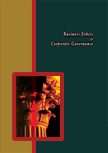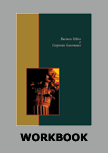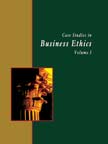Rio Tinto: The Mining Giant Pollutes Indonesia's Environment




|
|
ICMR HOME | Case Studies Collection
Case Details:
Case Code : BECG030
Case Length : 16 Pages
Period : 2003
Pub. Date : 2003
Teaching Note :Not Available
Organization : Rio Tinto
Industry : Mining
Countries : USA
To download Rio Tinto: The Mining Giant Pollutes Indonesia's Environment case study (Case Code:
BECG030) click on the button below, and select the case from the list of available cases:

Price:
For delivery in electronic format: Rs. 400 ;
For delivery through courier (within India): Rs. 400 + Rs. 25 for Shipping & Handling Charges
»
Business Ethics Case Studies
» Case Studies Collection
» ICMR Home
» Short Case Studies
» View Detailed Pricing Info
» How To Order This Case
» Business Case Studies
» Case Studies by Area
» Case Studies by Industry
» Case Studies by Company

Please note:
This case study was compiled from published sources, and is intended to be used as a basis for class discussion. It is not intended to illustrate either effective or ineffective handling of a management situation. Nor is it a primary information source.
|
|
<< Previous
Introduction Contd...
However, Rio Tinto maintained that it did not see any problem with mining in the forest area as it was adhering to the applicable government regulations.
|
For Rio Tinto, controversies such as the one above were nothing new. The company had been embroiled in many other similar problems for years.
However, the forest park issue gained a lot of prominence as the local community and many non-governmental organizations (NGOs) began opposing the mining activities strongly (Refer Exhibit I).
Meanwhile, the company did not seem to be bothered by these developments. A Rio Tinto project manager dismissed the protests stating, "Greenies (environmentalists) are protesting. But that always happens, greenies are protesting all over the world".2
|
|
Background Note
Founded in 1873, Rio Tinto began operations as The Rio Tinto Company by mining copper in Rio Tinto, Spain. Over the next few decades, the company expanded its mining business to many countries across the world. By 1954, the company had divested/sold-off most of its Spanish businesses. In 1962, the British operations of The Rio Tinto Company and The Consolidated Zink Corporation (a British mining company) merged to form The Rio Tinto Zinc Corporation (RTZ).
|
|
During the same year, the Australian operations of these two companies were merged to form Conzinc Rio Tinto of Australia (CRA). RTZ went on to develop many major mining projects such as Neves Corvo (copper and tin) in Portugal, Palabora (copper) in South Africa and Rossing (uranium) in Namibia. Between 1968 and 1985, the company expanded its interests to include cement, chemicals, oil and gas, and it even manufactured products for construction and automotive industries. However, a major strategy overhaul (during 1987-88) resulted in the company selling off its non-mining operations. In line with the decision to focus on mining and related activities, the company made many acquisitions in this field between 1988 and 1994... |
Excerpts >>
|
|





